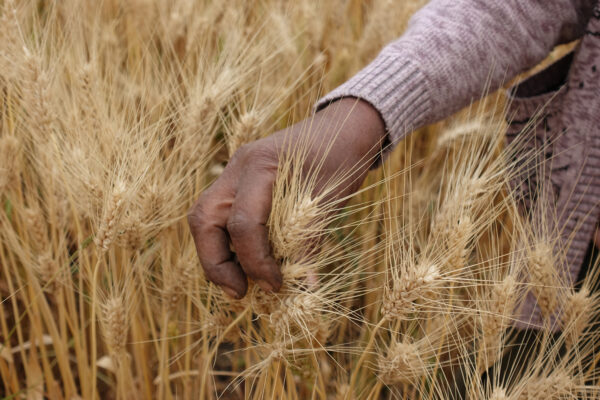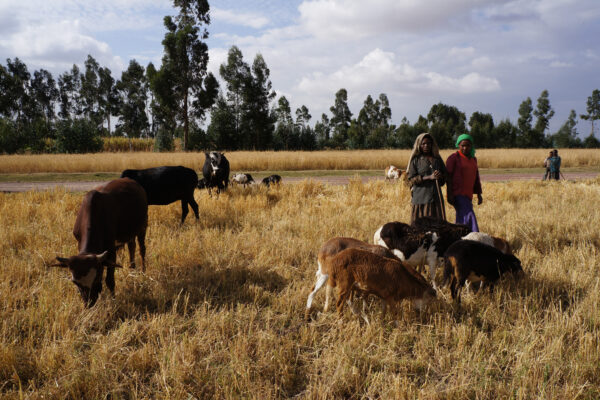Scope and Approach:
This objective will increase the capacity of the Delivering Genetic Gain in Wheat project to produce reliable phenotypic data for reaction to stem rust races and other biotic and abiotic stresses to facilitate the development of improved wheat germplasm. An integrated approach will combine biotic and abiotic stress tolerances to address key wheat production constraints in target countries. Phenotyping Platforms will be established (or expanded) to generate precision data for resistance to stem and yellow rust races in Kenya and Ethiopia. Testing sites at the Kenya Agricultural and Livestock Research Organization (KALRO) in Njoro, and the Ethiopian Institute of Agriculture Research (EIAR), in Debre Zeit, are already central to the DRRW project, and benefit the entire global wheat community. Holeta, Ethiopia will serve as the screening platform for Septoria resistance.
Over 600,000 and 87,000 wheat accessions from 25 countries / institutions have been evaluated in Kenya and Ethiopia, respectively, since 2008. This massive screening effort has greatly facilitated the pre-breeding and breeding efforts of CIMMYT, ICARDA and NARS programs in developing and promoting wheat lines with resistance to rusts.
Seedling evaluation at KALRO in Kenya and Ambo in Ethiopia will facilitate gene characterization studies in breeding materials and identify new sources of resistance to incorporate in breeding programs and deploy as durably resistant varieties.
Functional greenhouses complemented by expert staff will enable race identification and characterization studies on stem and yellow rust at KALRO in Njoro, and EIAR in the Kulumsa and Ambo research centers. This will facilitate the identification of potential new races and accelerate pre-emptive breeding efforts to develop and deploy resistant varieties in target regions.
Activities:
Activities within the phenotyping platforms will increase the capacity to produce reliable phenotypic data for stem and yellow rust, and Septoria. The data generated will be compiled and shared with collaborators, major stakeholders, and the international community and made available in an open access database.
Activities will include the use of improved greenhouses at KALRO (Njoro) and EIAR (Ambo, Kulumsa and Debre Zeit) for race characterization, seedling evaluation of breeding lines and gene postulation studies focusing on stem rust (Ambo), yellow rust (Kulumsa) and leaf rust (Debre Zeit). This activity complements field screening by testing for race specific genes and APR genes. The platforms will provide high quality phenotypic data useful in identifying new sources of resistance. Resistance will be characterized and confirmed in both bread wheat and durum wheat lines being considered for release in Kenya, Ethiopia, and at-risk countries. Survey and surveillance data will be used to identify new races, conduct preemptive breeding and inform decisions on varietal release.
In Ethiopia, activities will focus on resistance to three major biotic constraints of wheat: stem rust, yellow rust, and Septoria. The Holeta research center has been identified as a hot spot for evaluating bead wheat wheat accessions against Septoria. Activities there will facilitate screening of wheat breeding lines/accessions resistant to Septoria and the use of those lines in breeding programs and release for use by farmers. The Kulumsa research station will evaluate breeding lines and accessions identified resistant to the combined disease complex of YR/SR/Septoria. These activities will ensure development and release of high yielding wheat germplasm combining resistance to the major biotic constraints in East Africa. The partial support for the phenotyping platform in Izmir, Turkey will complement the yellow and stem rust resistance screening and pathogen characterization activities supported in Ethiopia.
Other activities will focus on training events, exchange visits to enhance the capacity of national programs, and special initiatives to provide opportunities for early career female researchers in wheat. These activities under the phenotyping platforms objective serve not only the global wheat community, but also have a direct benefit to East African and South Asian wheat growers, producers and consumers, especially in Kenya, Ethiopia, India, Nepal and Bangladesh.
Goals:
- Stem and yellow rust resistant bread wheat accessions identified, characterized, used in breeding programs and /or released for use in farmers fields
- Stem rust resistant durum wheat accessions identified, characterized, used in breeding programs and /or released for use in farmers fields.
- Ethiopia positioned to conduct gene postulation studies.
- Ethiopian farmers grow cultivars that are resistsant to disease complex consiting of stem and yellow rust and septoria tritici.
- Phenotyping Platform operation established for septoria in Holetta (Bread wheat).
Objective Leader:
Sridhar Bhavani, CIMMYT-Kenya









